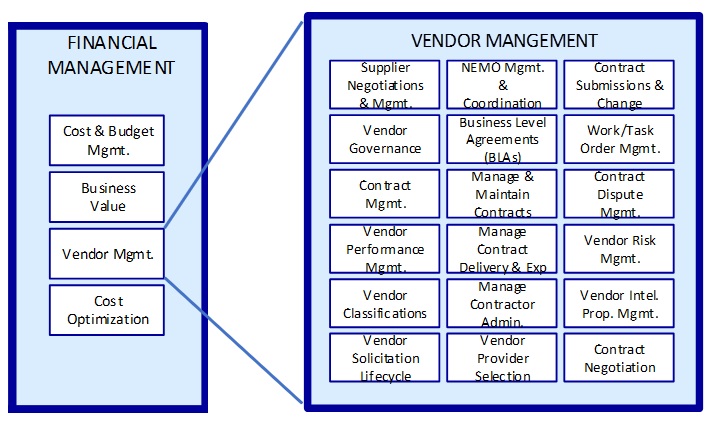Do you run a team today? Do folks know what your team provides? If you asked a business partner to name three services your team offers, could they do it? Today, I’m going to share insights on making the services you offer both internally and externally transparent to your business partners.
Hi, I’m Peter Nichol, Data Science CIO.
Companies hire new employees. Businesses partner for strategic alliances. Growth requires job expansion over what was performed yesterday. Each of these challenges leads us to one of the challenging jobs of every leader—ensure business partners understand the value our teams provide. Said another way, what services does your team provide which we might be able to consume?
What does your team offer?
There’s a funny quote from Joe Fuller, a management professor at Harvard that goes something like, “one thing I know about strategy is, it’s the assumptions that kill you, not your competition.”
I enjoy this perspective because it focuses on the assumption that people understand what you’re doing and what you’re providing in terms of value or benefits or some type of service proposition. They usually don’t.
What would happen if you ask a random person in your department what services or functions your team provides? They probably will answer with something similar to “well, you test stuff right” or “your team manages projects,” but what this tells you is they don’t understand this suite of services that you offer. What if you posed the same question to your business partners? Sure they might have a broad idea or that area your team plays in, but could they list 5 of 10 of the capabilities your team provides? I’m here to offer that they probably can’t.
Bad experiences, prevent future business
Imagine for a second that you walked into McDonald’s. Instead of looking at the menu posted on the board ahead of you, there was no menu. There was no #1 to order. You weren’t able to order a #3 super-sized. There was no menu. All you have to determine what to order is what you had overheard from friends. You might have heard that the burgers are good or that McDonald’s has good ice cream. This information could help you make a decision even with limited information. You may want to order one of these options. You’re unaware of anything else on the menu that they offer. Why? They have no menu remember.
You could have received some inaccurate information. Maybe you heard about the McPizza, McCrab, McSalad Shakers, or Mighty Wings. You might have even got excited about the summer buttery McLobster—all of which are discontinued and no longer offered at McDonald’s.
The disappointment you experienced at McDonald’s is the same disappointment your business partners felt when they didn’t fully understand the services you offered. Expecting a service you’re not available to receive is highly frustrating. If you had your heart set on a McLobster and you ended up with a double quarter pounder or some type of cheeseburger, you wouldn’t be too happy. You also wouldn’t be too thrilled about getting that same experience again. It’s challenging managing expectations of our team, not to mention the challenges when managing teams’ expectations the consume services our teams produce. Here’s how you stay ahead of this disaster.
First, understand that most people don’t know what services you provide. Second, even if they kind of know, your services—like the menu at McDonald’s—evolve.
This brings us to the need for a service catalog. Think of this more as a menu of what your business partners want, not a description of how the service is produced or manufactured.
Describe your services like this
- New chicken sandwich in the game features a brand-new crispy, juicy, tender fillet made with all-white meat chicken
- The melty cheese. The toasted sesame seed bun. The tangy pickle and crisp onion. And most important: the quarter pound of 100% fresh beef that’s cooked when you order.
- Cheese Bacon burger features thick-cut Applewood smoked bacon atop a ¼ lb. of 100% fresh beef. It’s hot and deliciously juicy, seasoned with just a pinch of salt and pepper and sizzled on our flat iron grill.
Not like this
- Support production operations with a Pitco SELV14C/14T-2/FD Solstice Reduced Oil Volume Electric Fryer System, state-of-the-art when it comes to deep-frying foods
- The staff runs dual Vulcan EV60SS-5HT240 which have over 60” of electric range, 27.25” of cooking surface, with 5 hot tops sections and dual ovens to get your order out fast
- Two shift managers on-site at all times, supported by 2 maintenance engineers, and 15-18 staff on-site taking orders and making food
How do you describe the services your team provides? Focus on the menu or the “what people want” not the “how it’s made.”
Specifically, I’m thinking about portfolio management. However, it doesn’t matter if you’re in cybersecurity, accountable for system testing, managing an IT infrastructure, or if you provide a sales function to your business partners. What’s important is that you can identify the key capabilities you can offer to your business partners. Group the services you can provide in some type of logical format, for example, a menu, an overview, or an outline. With this format, you have a very straightforward way for your business partners to identify and later consume services they’re interested in.
Designing your service catalog
Designing a service catalog does require core elements be covered to provide transparency around the specific service offering. Here are several items commonly found in a service catalog offering, regardless of how that catalog is presented.
- Name and description
- Owner
- Customers
- Parties involved
- Version and revision dates
- Service levels
- Service conditions
- Continuity
- Service hours, availability & Reliability
- Support and response times
- Changes and exceptions
What the menu looks like
Now, you can walk into McDonald’s with a menu in hand and clearly understand what is available and what’s not available. Items might be discontinued or removed from the menu. That’s just fine because you’re looking at the latest version. When you have questions about the duration of service or the quality, a description is provided with a narrative that clarifies those details. Think about how different that experience will be for our business partners. They are less frustrated. They understand what’s possible. Their expectations are more aligned from the start.
Here a high-level example of a service catalog theme. The actual services would be described in more detail and would be more juicy!

Too often, leaders don’t think of their teams as being in the service business. In reality, we’re all providing services for someone. It might be to direct customers, or the customers may be internal; everyone offers services to customers.
Consider that most of the folks which you interact with every day, if asked, don’t understand the services your team, department, or organization provides. If they don’t know what your team does, be sure they don’t know what individuals do. You, as a leader, can change that with a service catalog.
Take a minute and map out a service catalog for your team. Begin to clarify the value proposition that you offer to your business partners.
If you found this video helpful, that’s great! Check out my books, thankfully disrupt and learning with value, both available on www.datsciencecio.com.
Hi, I’m Peter Nichol, Data Science CIO. Have a great day!
